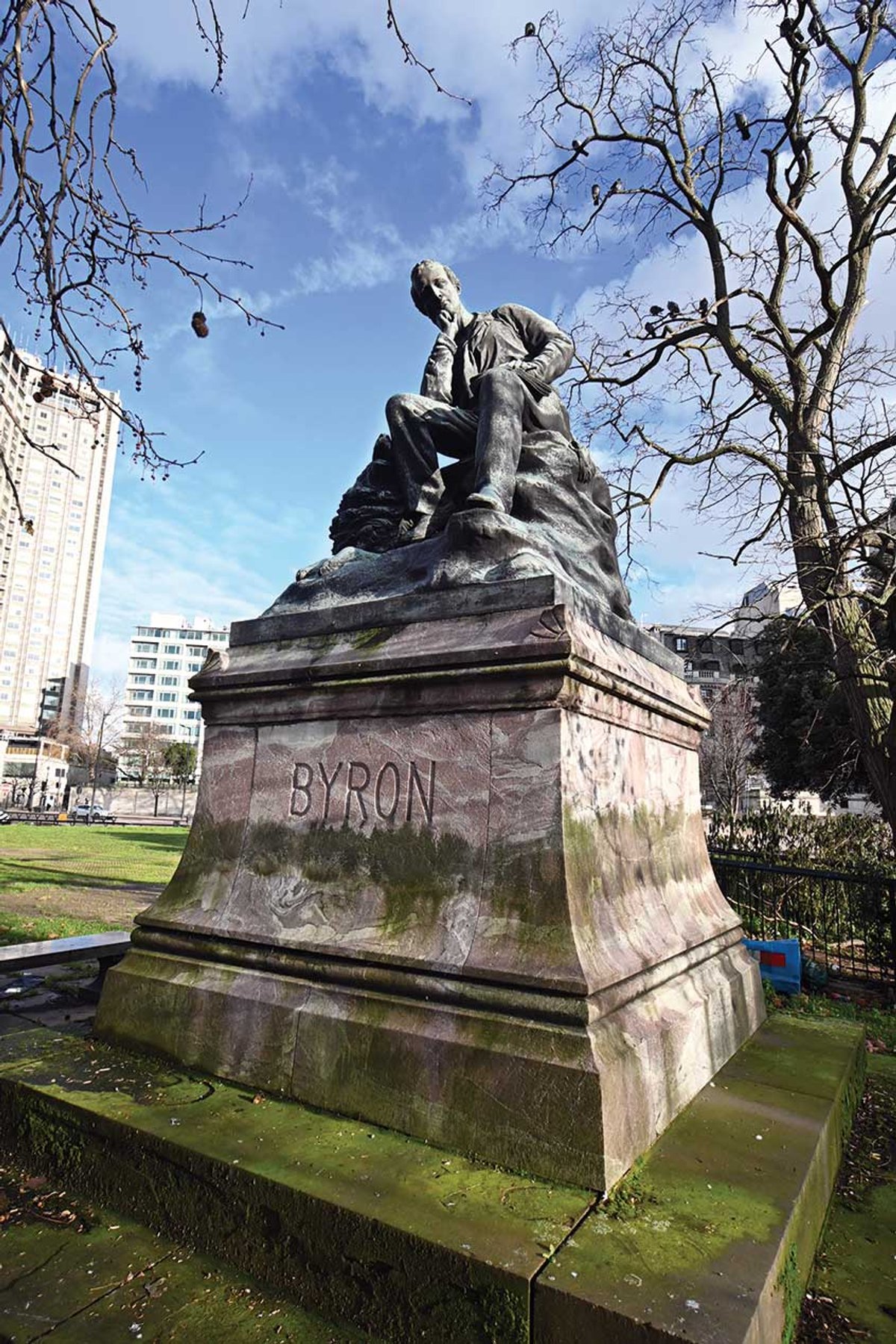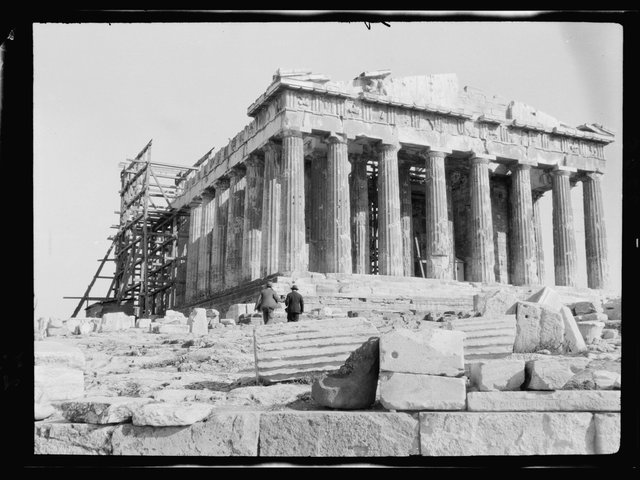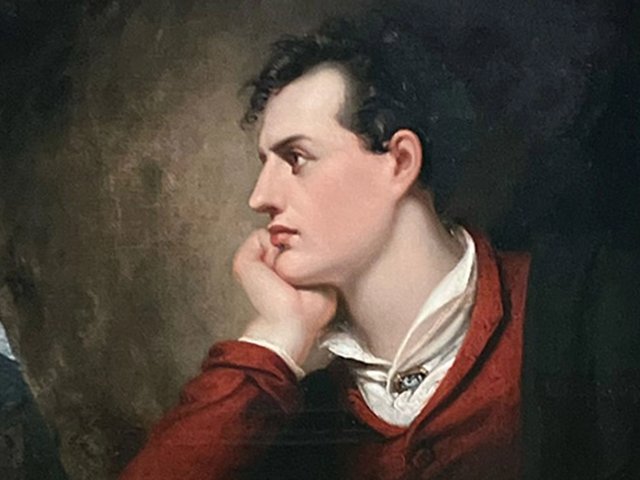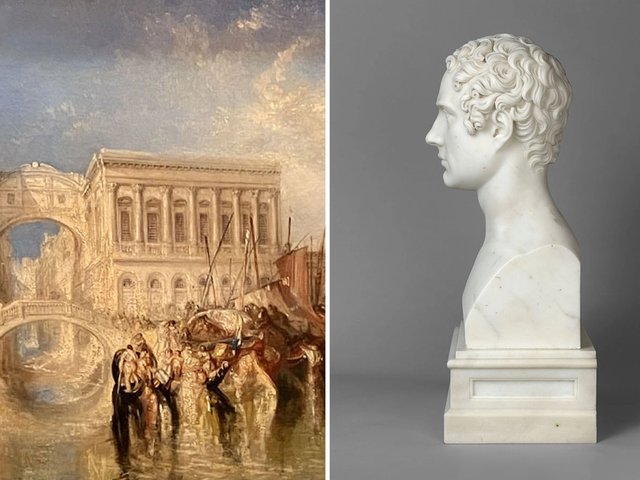An appeal to raise £360,000 to move a late-Victorian memorial to the poet Lord Byron to a more accessible site on the north edge of London’s Hyde Park from its present place on a roundabout in Park Lane, a mile to the southeast, is the latest round in the city’s historic and recurring battle with itself to do full honour to one of the greatest writers of his era in the 200 years since his death.
When the great and good of Victorian Britain, headed by the Conservative party leader Benjamin Disraeli, formed a committee in 1874, on the 50th anniversary of Byron’s death, to commission a memorial statue to the Romantic poet, it was to right an existing wrong. The winning design, by a young London sculptor, Richard Belt (Auguste Rodin was among the runners-up), was chosen in 1877 and installed at the east end of Hyde Park in 1880. The statue meant that the city of Byron’s birth had given him a measure of formal recognition that had been denied at the time of his death in 1824.
Byron, the most famous writer of his generation—whose image, and sartorial and artistic “Byronic” pose, was more widely shared, through the spread of engraving, than the likeness of any contemporaries with the exception of Napoleon Bonaparte—had died in Missolonghi, Greece, on 19 April 1824 while supporting the Greek rebellion against Ottoman rule. He was declared a national hero in Greece, and his remains repatriated and buried in a family vault in Nottinghamshire. But efforts to install a memorial at Poets’ Corner in Westminster Abbey were rebuffed, fuelled by clerical squeamishness at the scandalous private life that had caused Byron to go into self-exile in Switzerland, Italy and finally Greece for the last eight years of his life. John Cam Hobhouse, one of Byron’s closest friends, commissioned a full-figure marble memorial of the poet from the Rome-based Danish sculptor Bertel Thorvaldsen in 1829. When the statue arrived in Britain, Hobhouse campaigned long but unsuccessfully to have it stand in Poets’ Corner, and eventually gave it in 1844 to the Wren Library at Trinity College, Cambridge, Byron’s alma mater, where it stands to this day.
In 1924, the centenary of Byron’s death, the abbey again refused a request for a memorial at Poets’ Corner, the Dean of Westminster citing Byron’s “dissolute” life and “licentious” verse, and it was not until 1969—after the social fallout from the Lady Chatterley trial and the rise of the Beatles—that Byron took his place there. By that time plans were in place to turn Park Lane into a six-lane road, eventually leaving the 1880 memorial in traffic island isolation. The Byron Society seeks funds to move the statue and marble base, a gift of the Greek government, so that it may be more easily seen and honoured in the city of its subject’s birth.






